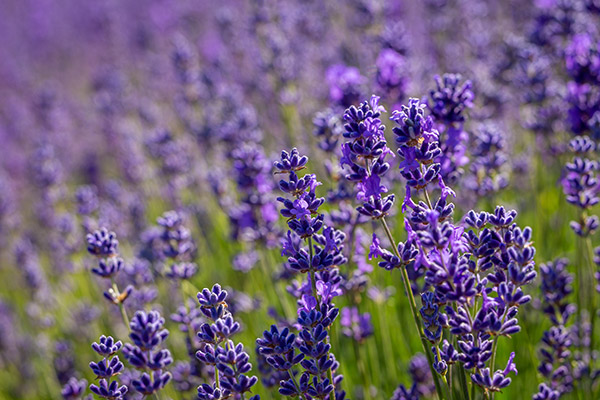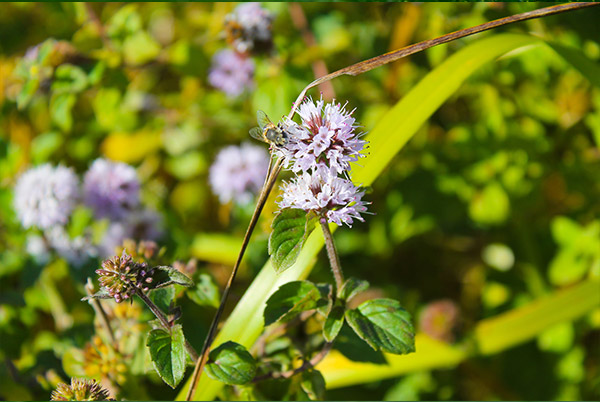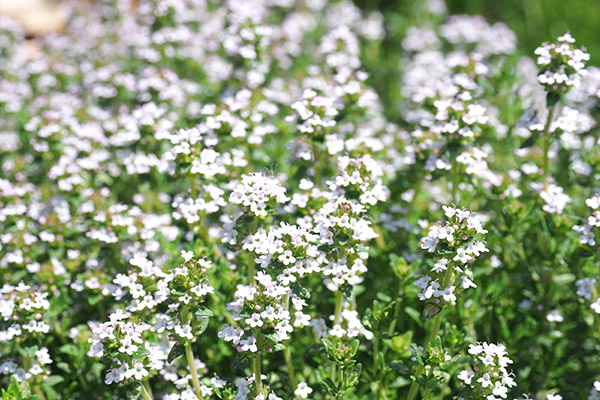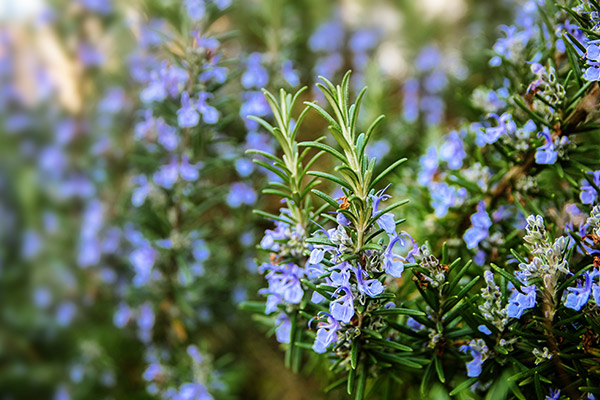binomial nomenclature
common name
Lavandula
Lavender
General characteristics
The genus Lavandula includes about 30 species originating in Mediterranean countries. It’s a perennial shrub, evergreen, that fits well to different types of soil. Produces spike-shaped inflorescences, each of which contains a variable number of lilac-blue flowers with an intense scent.
Cultivation
It is a rustic plant, does not need any special care, loves the sun, so it must be planted in a sunny corner of the garden and in a well-drained soil. It does not fear the summer heat, bears also severe and extended frosts, rarely gets watered.
Trimming
It’s trimmed at the end of summer to remove dry stems and in March-April to encourage new buds.
Connection with the fauna
Lavender attracts pollinating insects such as bees, bumblebees and butterflies.

binomial nomenclature
common name
Mentha
Mint
General characteristics
Mint is one of the most cultivated aromatic plants of the world. It’s a perennial herbaceous plant, whose leaves have glands that produce essential oils that give it the characteristic aroma. The flowers, white or pink-violet, are held by inflorescences. The flowering takes place from spring to summer, but can last until autumn.
Cultivation
It’s a plant that can grow both in full sun and in shaded areas, but the brightest places allow it to produce more essential oils. Requires regular and generous watering during the summer. Most species do not love stagnant water, so the soil must be porous. Also is very important that the soil is fertile, that’s why it’s good to renew it every 2-3 years.
Trimming
It does not require to be trimmed regularly, only dry or damaged parts must be removed.
Connection with the fauna
Mint attracts pollinating insects, especially belonging to the Orders of the Diptera and the Hymenoptera.

binomial nomenclature
common name
Thymus
Thymus
General characteristics
Thymus is a plant found throughout Europe, Anatolia, Mediterranean Asia and North Africa. It can be herbaceous or perennial shrub, up to 40-50 cm tall. The leaves are small in almost all species, lengthened and covered with a thick fluff. The white-pink flowers are held by spike inflorescences.
Cultivation
It must be planted in sunny places, stands drought but does not bear stagnant water, especially in winter. Thymus adapts well to any type of soil.
Trimming
It does not require to be trimmed regularly, only dry or damaged parts must be removed.
Connection with the fauna
It does not need any particular trimming, only dry parts must be removed.

binomial nomenclature
common name
Rosmarinus officinalis
Rosemary
General characteristics
It’s a bushy perennial shrub that can reach up to 2 meters. Rosemary has deep roots strongly anchored to the soil and woody stem. The leathery leaves are rich in glands that secrete the oils responsible for the aroma of the plant. The blue-violet flowers are clustered and are present most of the year.
Cultivation
It loves sunny and warm areas, can suffer very low temperatures. Rosemary prefers dry soils, must be watered little, but needs more water when is young.
Trimming
It does not need any particular trimming, only dry parts must be removed.
Connection with the fauna
The nectar of its flowers attracts pollinating insects, while its fruits are particularly appreciated by birds such as the blackbird. The thorns on the branches make it a tangled shrub, so that can provide protection for host animals.

binomial nomenclature
common name
Salvia
Salvia
General characteristics
The Genus Salvia includes more than 700 species of plants distributed throughout the world. It’s a bushy perennial shrub, from 30 to 150 cm tall, with branched and woody stems at the base, green-greysh leaves, thick and wrinkled. The flowers, held by inflorescences, are blue-violet and appear on the peak of the stem in spring-summer.
Cultivation
Its optimal exposure is in full sun, does not need to be watered much. Stagnant water should be avoided, as they represent the main cause of death for the plant.
Trimming
Towards the end of the summer, after the flowering, it would be advisable a trimming in order to support the development of new vegetation.
Connection with the fauna
Its flowers are particularly appreciated by bees.
